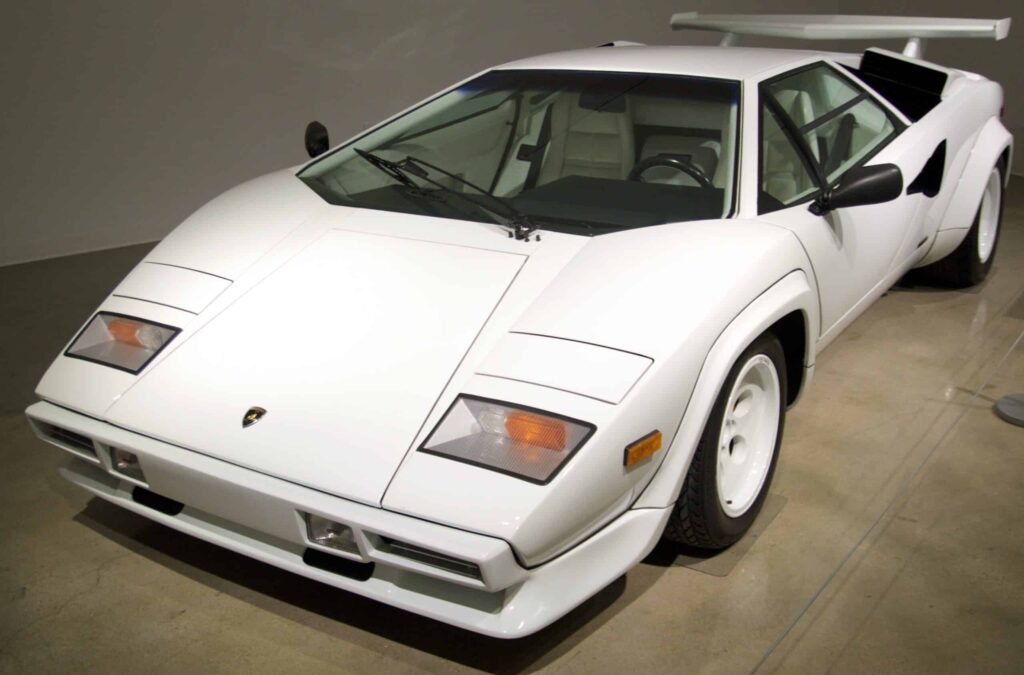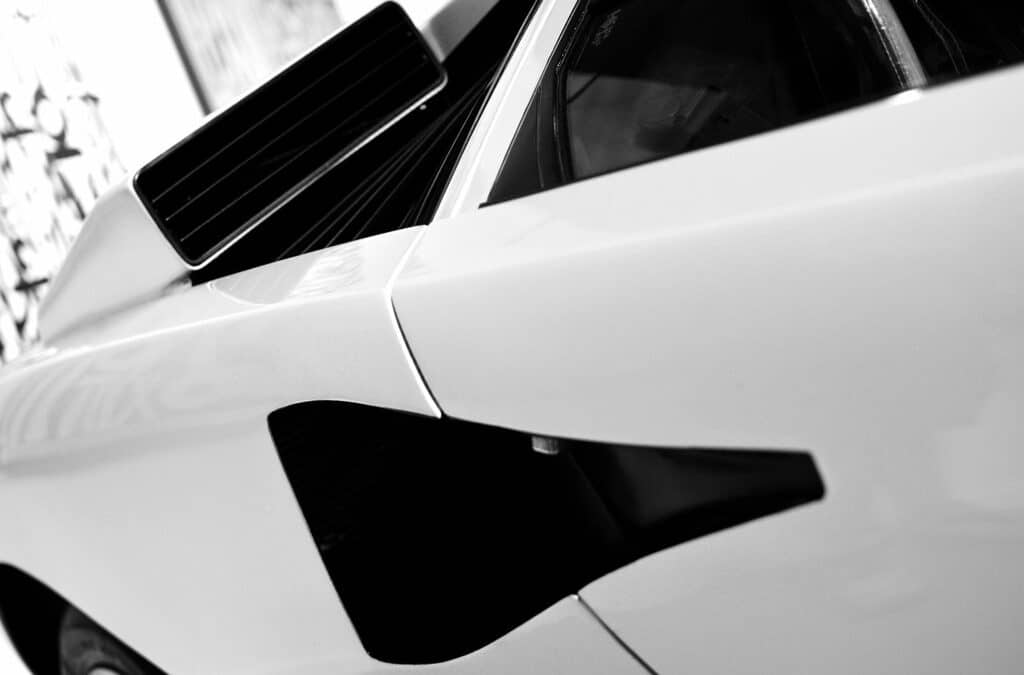Some cars are so remarkable that everybody recognizes them, even if they are not an automotive enthusiast. And the legendary Lamborghini Countach is, for sure, one such model. Without an inch of doubt, this is one of the most iconic cars ever made. Yet, this wasn’t primarily down to its superb performance or road capabilities. Instead, the looks to which it owes its immortal status set the Countach apart from the rest. But how the Italian manufacturer built the supercar is probably even more fascinating. So, here is why Lamborghini Countach is so important.
Why did Lamborghini start building sports cars?
The story of Lamborghini starts in Italy in the late 40s, just a few years after the war ended. This was when an innovative and ambitious businessman Ferruccio Lamborghini started building tractors from disused military equipment. And with Italy’s agriculture industrializing at a fast rate, such equipment was in high demand. In such circumstances, the tractor business proved to be highly profitable for Ferruccio. Having more money, he could afford to buy himself more luxurious cars, with Ferrari 250 GT being his favorite model. But this spectacular car had several weak points, with the frequently failing clutch being the most annoying. Attempting to address the issue, he presented his ideas about upgrades to the Enzo Ferrari himself. But not being interested in someone else’s opinion, the Old Man rejected the offer. He apparently said to Ferruccio: “Let me make cars. You stick to making tractors”. Infuriated by this rude rejection, Lamborghini made a life-changing decision to design and build cars that would be better than Ferrari.
Lamborgini’s first models, such as 350GT, featured all the upgrades Ferruccio felt were necessary for sports cars of that time. This included a more robust drivetrain under the hood and a range of luxuries and creature comforts inside the cabin. But in 1966, the Lamborghini unveiled the model that shook the automotive industry and gave birth to the supercar as we know it today – the legendary Miura. The main difference between it and any previous sports cars was its mid-mounted engine, a configuration all hyper-performance cars use from then on.
Revolutionary as it might have been, the Miura still wasn’t perceived as a true match to the cars Ferrari was offering at the time. To go against such a renowned name, being as good is just not enough. In many cases, being plainly better won’t do the trick, either. The fact was that Lamborghini could only beat Ferrari in its home territory by going over the board. In essence, they needed a car that would be a game changer. And that’s what Lamborghini Countach was.
The Lamborghini Countach – how it looks?
The first production-ready Lamborghini Countach, internally designated as LP400, debuted in 1977, following several years of development. Visually, this supercar was heavily based on the LP500 concept, which was styled by Bertone and is considered one of their finest works. It’s also a textbook example of how what is known as a Wedge car should look. It was low and wide, had a lot of sharp edges all around, and a sloping front end. This shape was possible thanks to something Countach inherited from its predecessor, the Miura. Both cars have their engines at the back, just behind the seats. This meant the hood could be lower and at an angle, with its front end just a few inches above the ground. There was, however, something unique to the car’s design language. While the top surfaces, such as the hood or roof, were flat or angled, the sides were curved and softer. This gave it a unique blend of aggressiveness and elegance at the same time.

The whole body was made from aluminum, ensuring lightness and resilience to the Italian-made car’s old enemy – rust. And as a cherry on top, there were the doors, whose opening was unique. Lamborghini fitted the Countach with a special mechanism that swung them upwards instead of sideways. These scissor-style doors created a trend in the automotive industry that is still present today, predictably called Lambs-style doors.

In 1977, a redesigned Lamborghini Countach, known as LP400 S, was introduced. The new car featured several upgrades aimed at improving performance and styling. For a start, it got much wider tires than an outgoing model, which, combined with modifications to the suspension, improved the cornering grip. The front end was tweaked to generate more downforce, preventing excessive lift at high speeds. But the most striking change happened outside, where designers fitted aggressive fender flares and a gigantic rear spoiler. Now, while the car’s overall shape hasn’t changed, these components radically transformed its appearance. The result was that particular Lamborghini Countach that we all know and remember. This was the supercar that, during the 80s, found its way onto so many walls as a poster. And for a lucky few, it even found a way into their garages.
What does the Lamborghini Countach have under the skin?
It wasn’t all just the looks with Lamborghini Countach, as there was a substantial performance to go with the aggressive design. At the heart of it, there was one thing every real Lambo has – a mighty V12 engine. This 3.9-liter unit was, in fact, the same as the one used in Miura, the car Countach replaced. But while the outgoing model had the engine mounted sideways, the new model used it in a lengthways configuration. Besides allowing more comfortable access to all crucial components, this layout ensured better weight distribution and improved cooling. However, this engine had different carburetors than Miura, resulting in a reduced power output, rated at 375 horsepower. This went further down when the redesigned model was introduced due to emission control regulations.
This power shortage was solved when the LP500 model was introduced, which had a 4.8-liter engine. Later in production, Lamborghini Countach got an even bigger unit, with 5.2-liters of displacement and 4 valves per cylinder. These versions were called LP5000QV, with QV being short for Quattro Valvole, pushed out a staggering 455 horsepower. During its whole production run, Lamborghini Countach had the same transmission – a fully-synchronized 5-speed manual.
Besides the engine, Lamborghini Countach had one more ace up its sleeve. Or, to be precise, under the sheets of its Aluminum body. In the 70s, this was one of the rare road-going cars to have a space frame chassis made from steel tubes welded together. This construction, borrowed from the motorsport world, helped reduce the weight and improve structural strength. As a result, the Countach was lighter and more rigid than it would be if it had a traditional chassis. First models weighed just above 2,800 pounds, while later ones, with their big engines and spoilers, were a bit heavier.
Performance-wise, first cars would hit 60 mph in five seconds and could nearly reach the 180 mph barrier. Later, more powerful models had slightly shorter 0-60 times and higher top speeds, with LP5000QV reaching 185 mph.
Engineering ingenuity and shortcuts
With its stunning looks and stellar performance, the Lamborghini Countach was, and still is, a spectacular car. But from an engineering point of view, the way it was designed and built is probably even more amusing.
For a start, every Countach has those iconic side vents, which are not there just for the show. In fact, the first prototype didn’t even have them, as these were added afterward during development to aid cooling. But despite this being done out of pure necessity, these side vents became one of Lamborghini’s most recognizable trademarks.

Then, that was the way engineers tweaked the body during the development phase. After initial road tests with pre-production models, it was quickly discovered that the car was unstable at high speeds. Assumingly, the car’s aerodynamics wasn’t generating enough downforce. What most manufacturers would do at this point is to take their newly designed car into the wind tunnel and see what’s causing the problem. But wind tunnels are expensive to rent, and Ferruccio didn’t want to pay this extra cost. Instead, the engineers covered the whole car with wool pads and wolf painting and ran it down the highway. This simple method would reveal the problematic parts of the body, as wool wouldn’t flatten down at speed there.

Engineering tricks weren’t the only thing Lamborghini had to pull off when working on Countach, as there was also some red tape to tackle. While working on a redesigned model, which would be unveiled in 1978, designers added a massive rear spoiler. But legally, this component would have to pass a homologation. This process is not only expensive, but it is also time-consuming, as it involves dealing with Italian slow and complicated bureaucracy. To avoid this, Ferruccio decided to assemble the cars without the spoiler. This would be fitted later after the car had passed all legal inspections. Lamborgini’s owner thought none of the bureaucrats would be diligent enough to notice this, and, as it turns out, he was right.
Buying a Lamborghini Countach and living with it
Being a top-end supercar, Lamborghini Countach never sold in excessive numbers. During its 16-year-long production run, a total of 1,983 cars were made. Predictably, this, combined with the cars’ highly desirable status, does affect its market price. Currently, it’s almost impossible to find a Lamborghini Countach for less than a quarter of a million dollars. And less common models, such as those from 1974 or the LP5000QV, are even more expensive. Depending on the condition and mileage, their price varies between one and two million dollars.And with such purpose-built vehicles, the result is a question of what owning them in real life is like. Sure, some supercars are easy to live with, but Lamborghini Countach is definitely not one of them. Throughout the years, owners complained about heavy steering and clutch or a total lack of visibility to the rear. In addition, keeping a V12 engine with six twin carburetors in tune can be demanding. But these downsides are a small price to pay for owning such a spectacular car. And it’s not like anybody will use it as a daily runaround.





